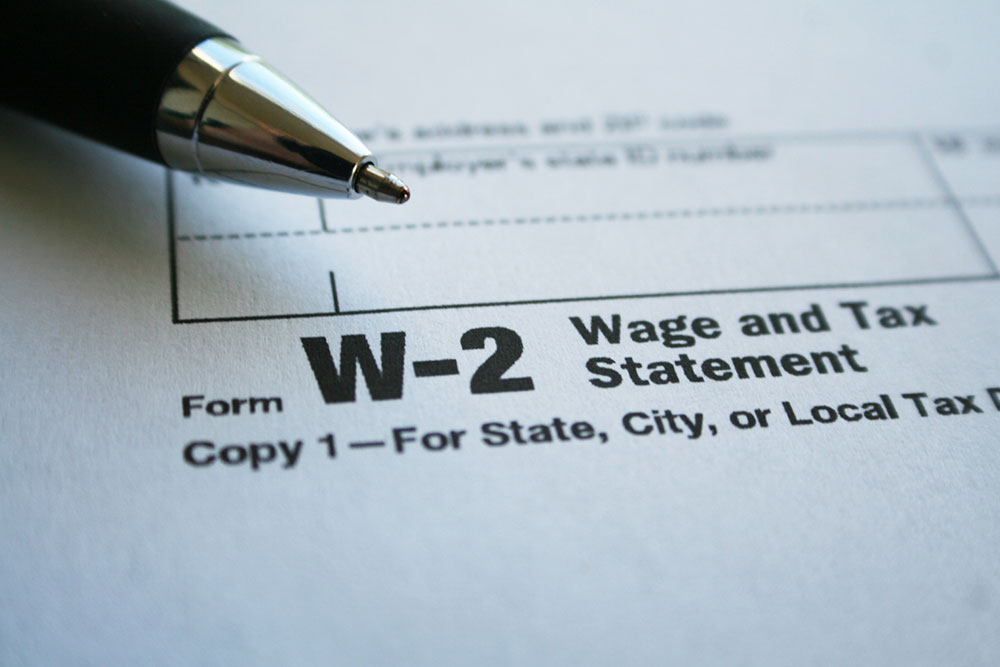Key information about form W-2 one should know

To understand and correctly file taxes, individuals must understand the importance and requirements of the W-2 form. It is a critical document that shows important information about the income one has earned, the amount of taxes withheld, and benefits. This form is more of a legal requirement than simply a record. For employers and employees to take care of their taxes and wages correctly, it is critical to understand the form better.
Overview
W-2 or the Wage and Tax Statement form must be sent to each employee by the employer. The IRS should also be sent a copy of this form at the end of each year. The form has records and details of an employee’s annual wages and the taxes withheld from their paychecks. W-2 employees receive their paychecks with the taxes deducted by their employer. The employer needs to submit that information to the government employee. The W-2 form reflects a person’s income and taxes paid during that annual year.
The form has three sections, each with its details and requirements. On the left side, the form includes the taxpayer’s personal information. The right side of the form contains information about the individual’s earnings and tax information. On the bottom of the form is the local and state tax information.
Eligibility
Individuals who have worked for a company or an employer in the last year and earned $600 are eligible for a W-2 form. Employers are required by law to send the form to all their employees. Individuals who work as independent freelancers, contractors, or other self-employed workers are bound to receive a Form 1099 in its stead.
Application process
Employers can make the W-2 form available online or send a copy to their employees offline. Employees can also ask the IRS if they need a second copy of a previous form or details of previously filed tax. Employers can get new forms from the IRS or a supply store that stocks office supplies. Employers or employees should remember not to download or print the W-2 form visible on the IRS website. The form available is only an example and should not be used to file taxes.
Reporting criteria
The form should be issued only if the employee has been paid in cash or equivalent to $600 or more during the past year. The amount is inclusive of tax benefits. The duration of employment is not a deciding factor in the matter.
If an individual receives the payment above as an employee, their employer must report the tax and payment details, whether they work full or part-time. Employees need to check the terms under which they might not qualify or still receive a form when they do not meet the requirements. Some employers prefer issuing a Form W-2 to all their employees. This might be irrespective of whether or not the employee has received a payment of $600 or more. Employers do this because it is easier to issue all employees a form than to track down and issue selected forms.
Due date
During most years, employers are required to forward the form and details to their employees by the end of January. The employers can meet the ‘furnish’ deadline only if the form has all the right details and has been adequately addressed.
Number of copies required
Employers are required to have multiple copies of the W-2 form. Out of the numerous copies, the employee receives three copies in their mailbox. The employee can store Copy C from the stack for their record. Copy B is used for Federal Income Tax reporting. The employee can submit a copy when they file their tax returns. However, if they file the returns online, they might need to prepare their Copy B papers in advance instead of forwarding the copy to the IRS. Copy 2 is the copy that will be filed with the relevant tax office or authorities to report the employee’s local income tax and city and state income tax.
Employers can opt to provide their employees with electronic copies of their tax forms if they have the appropriate resources and a well-established system.
Employers must know that obtaining their employees’ express consent may be necessary before providing them with electronic copies of their Form W-2. Employers should remember that some employees may not agree to the terms their employer requires to receive these electronic copies, so it’s essential to inform them of their options.
How to maintain records
Most professionals advise storing the form for up to 3 years after the filing or due date. Individuals need to track based on whichever date is the latest. They are required to keep the Copy C of Form W-2. However, the IRS has different recommendations. It suggests that the employees keep a record of all their W-2 and other tax payment forms until they receive their social security payments. This can seem like a lot of paperwork, but the IRS states it can be helpful if the employee is questioned about their earnings in a specific year or period. Employees can also keep track of the estimated benefits they would receive for their Social Security simply by creating an online “my Social Security” profile.







